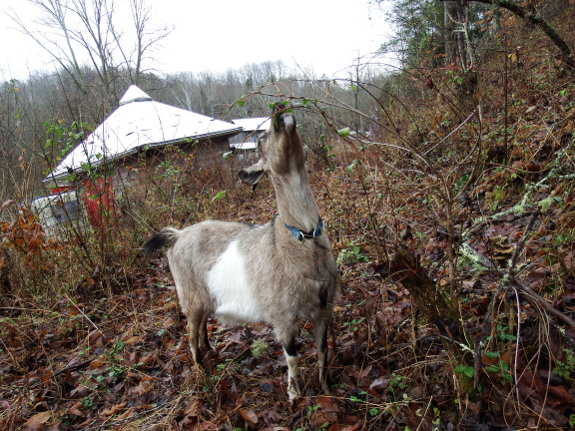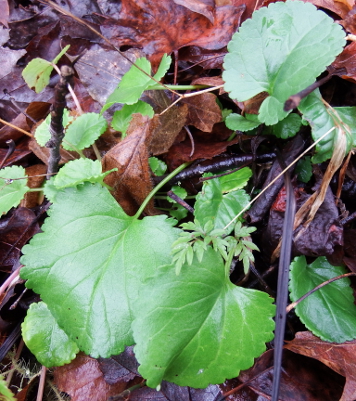
Goats eating potentially hazardous plants

I always wonder when I
see one of our goats chowing down on a wild plant that our other goat
ignores. Was Abigail fulfilling a pregnancy craving when she spent a few
days chowing down on golden ragwort leaves? The plants' green abundance
in the brown winter woods suggests that ragwort might be toxic to deer,
and data on a related species shows that the leaves are very high in
copper. But everyone knows that goats have higher copper requirements
than some of their relatives, and Abigail's previous owner didn't
administer  boluses while Artemesia's previous owner did. I've yet to cross the copper bridge myself, other than providing free-choice minerals and kelp in the coop, so maybe that's why Abigail spent a few days gorging on ragwort...then went off it cold turkey.
boluses while Artemesia's previous owner did. I've yet to cross the copper bridge myself, other than providing free-choice minerals and kelp in the coop, so maybe that's why Abigail spent a few days gorging on ragwort...then went off it cold turkey.
Meanwhile, our littler
goat always hunts down hog-peanut seeds, even while Abigail is busy
chowing down on mountains of honeysuckle leaves a few feet away. Perhaps
Artemesia simply likes the nutty flavor, or perhaps she needs more
protein to feed her teenage growth spurt.
And then there are the
times I catch Abigail scarfing down some dried oak leaves off the forest
floor. Could they really have any nutritional value after sitting out
in the rain for months? Or does our older goat just need something tough
to settle her stomach after gorging on honeysuckle?
After noticing that my own list of favorite vegetables closely matches the list of the most nutritious vegetables,
I have to assume that goats and humans alike can tell by taste which
natural supplements we need. The trick, I suspect, is to listen to our
bodies and learn that just because our eyes want chocolate ice cream,
that doesn't mean our stomachs don't want kale and garlic.
Want more in-depth information? Browse through our books.
Or explore more posts by date or by subject.
About us: Anna Hess and Mark Hamilton spent over a decade living self-sufficiently in the mountains of Virginia before moving north to start over from scratch in the foothills of Ohio. They've experimented with permaculture, no-till gardening, trailersteading, home-based microbusinesses and much more, writing about their adventures in both blogs and books.
Want to be notified when new comments are posted on this page? Click on the RSS button after you add a comment to subscribe to the comment feed, or simply check the box beside "email replies to me" while writing your comment.
- Remove comment
- Remove comment
- Remove comment
